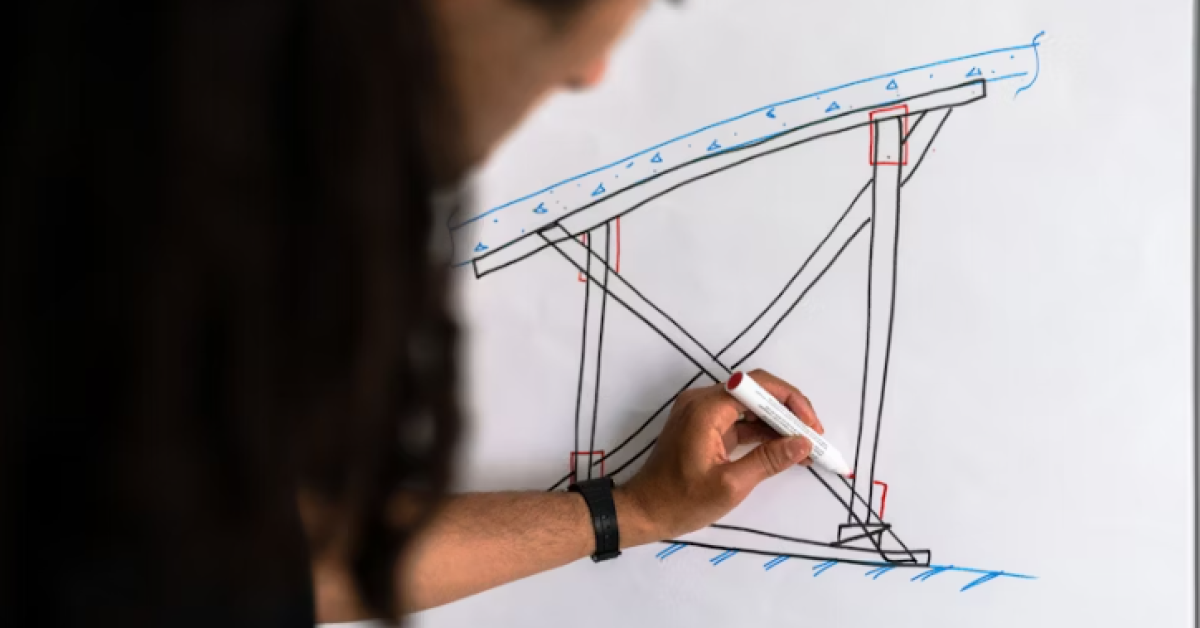Architect Tools Improving Accuracy in Structural Design

Male structural engineer draws on whiteboard-ThisisEngineering-https://unsplash.com/
Architect Tools Improving Accuracy in Structural Design
In the world of architecture, precision is more than a technical requirement — it is the foundation of trust between imagination and reality. Every beam, every curve, and every joint in a structure must align perfectly to ensure safety, sustainability, and aesthetics. Over the past decade, the evolution of architect tools has dramatically reshaped how accuracy is achieved in structural design, transforming traditional blueprints into intelligent, data-driven models.
The Rising Demand for Precision in Architecture
Modern architecture is no longer just about creating visually striking buildings. It’s about designing structures that stand the test of time while meeting rigorous safety and environmental standards. As cities expand vertically and materials evolve, the margin for error has narrowed. Today’s architects rely on sophisticated tools not only to visualize their designs but to calculate and test every detail with mathematical precision.
Bridging the Gap Between Design and Engineering
Historically, architects and engineers worked in separate phases — architects focused on the concept, while engineers handled the calculations. This separation often led to communication gaps and design conflicts. The introduction of integrated architect tools has changed that dynamic completely. Through platforms like Revit, Tekla Structures, and ArchiCAD, design and structural analysis now coexist within the same digital environment. This integration allows architects to visualize how materials behave under stress, how loads are distributed, and how each element contributes to the structure’s stability — all before construction begins.
Core Tools Enhancing Accuracy in Structural Design
Behind every precise architectural plan lies a suite of advanced digital tools that help architects validate their ideas with real-world data. Below are some of the most influential technologies shaping the accuracy of modern structural design:
- Building Information Modeling (BIM) — BIM has become the cornerstone of modern architectural accuracy. By creating data-rich 3D models, architects can simulate structural behavior, detect clashes, and adjust parameters in real-time. This reduces design errors and minimizes costly revisions during construction.
- Finite Element Analysis (FEA) — Tools integrated with FEA capabilities allow architects and engineers to simulate how different materials respond to forces, pressure, and temperature variations. This predictive modeling ensures that designs are both efficient and safe.
- Parametric Design Software — Programs like Grasshopper and Dynamo enable architects to use algorithms to control design geometry. This method ensures consistent precision across complex forms, especially when dealing with unconventional or organic structures.
- Cloud-Based Collaboration Platforms — Platforms like BIM 360 and Trimble Connect allow real-time updates, version control, and data sharing, ensuring that every stakeholder works from the most accurate model available.
The Role of Automation and Artificial Intelligence
Automation has taken architectural accuracy to a new level. Instead of manually calculating structural loads or modeling repetitive components, AI-driven tools can analyze design data and suggest optimal configurations. Machine learning algorithms can detect potential flaws, recommend materials, and even predict long-term performance under varying environmental conditions. This not only enhances accuracy but also saves architects hours of repetitive work.
Predictive Design and Simulation
Architectural firms are now adopting predictive simulation tools that use AI and physics engines to test a structure’s response to real-world scenarios — from wind pressure to seismic activity. These simulations allow designers to anticipate challenges and make informed adjustments during the early stages of design, when changes are still inexpensive and impactful.
Reducing Human Error Through Intelligent Workflows
Even the most skilled architects are prone to oversight, especially when managing complex projects. Intelligent workflows, powered by integrated software ecosystems, act as a safeguard. Automatic clash detection, parametric validation, and dynamic linking between architectural and engineering models ensure that discrepancies are caught instantly. This digital precision minimizes the risk of structural flaws and enhances the reliability of every decision made along the design process.
Case Studies of Precision-Driven Architecture
Some of the world’s most ambitious architectural projects showcase how technology ensures accuracy. In Dubai, the Museum of the Future was modeled using parametric software and real-time structural feedback tools, enabling engineers to balance aesthetic fluidity with structural strength. Similarly, bridges designed in Scandinavia employed BIM-integrated analysis to measure stress points and material distribution, ensuring both durability and design integrity.
The Evolving Relationship Between Architects and Data
Data has become an architect’s most powerful ally. Every model now carries embedded information — from load calculations to maintenance schedules. This data-centric approach transforms structural design into a living, evolving process. Architects are no longer designing static buildings; they are creating systems that adapt, learn, and respond to environmental and structural demands over time.
The Future of Precision in Design
As the architectural landscape continues to embrace digital transformation, accuracy will only become more intertwined with creativity. Future tools may enable self-correcting models, automated compliance checks, and material simulations so detailed that prototypes become unnecessary. The architect’s pencil may have gone digital, but the essence of accuracy — a deep respect for form, function, and human safety — remains unchanged.
